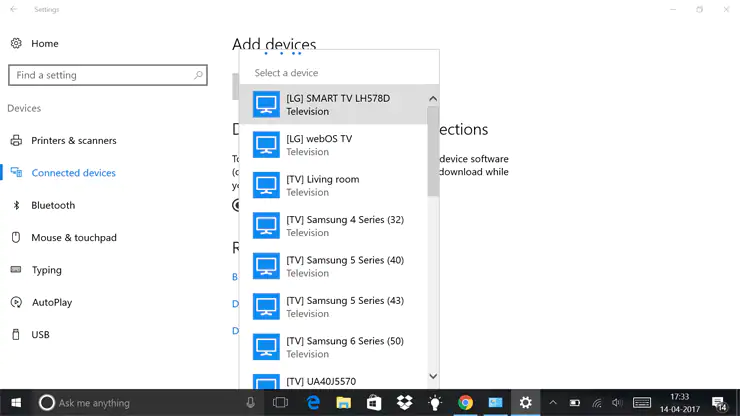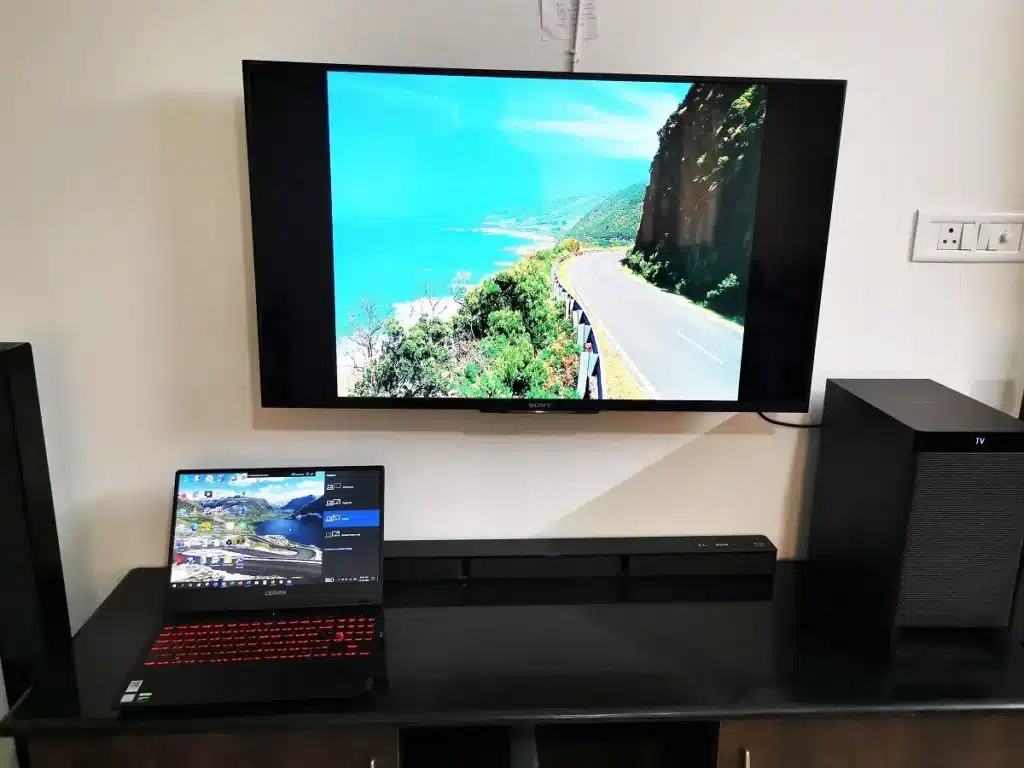Table of Contents
Easiest Way to Connect Laptop to Smart TV?
How To Connect Laptop To Smart TV? The easiest way to connect your laptop to a TV is via HDMI. This is because almost all laptops have an HDMI port and most TVs support it.
There are also ways to connect your laptop to a TV wirelessly. This is especially useful for giving presentations or for using multiple monitors.
Wired HDMI Connection:
The easiest and most common way to connect a laptop to a TV is with an HDMI cable. Most modern laptops have a standard HDMI port on the back or side, while older models might have a USB-C, full-size USB 3.0, DVI, or DisplayPort connection that can be connected to a TV using an appropriate adapter. You can also use a VGA cable for older laptops, but keep in mind that this only transmits video and not audio.
Whether you’re giving a presentation, watching a movie, or playing triple-A games, there are many reasons why you might want to connect your laptop to a TV. Using an HDMI cable is the simplest and most convenient way to do it, and this method works on all laptops.
To start, make sure your TV and laptop are both turned on. Then, attach one end of the HDMI cable to your laptop’s HDMI port and the other end to the corresponding HDMI input on your TV (it will be labeled as such). Turn on the TV and select the correct source with your remote control. Once the TV is connected, it should automatically begin displaying your laptop’s screen on the TV. If not, you might need to adjust your laptop’s screen output in the Display settings. You can find this in the Start menu on Windows or the System Preferences on Mac.
Wireless HDMI Connection:
A laptop is a great computer to bring with you on the go, but its small screen can be restricting when you want to watch movies or TV shows. Fortunately, connecting your laptop to a large-screen television is easy and convenient. You can do it wirelessly or with a wired connection.
First, check that your laptop has an HDMI port (or a similar video output). If it does, connect the appropriate cable to it. If your laptop does not have an HDMI port, you can buy a cheap adapter to convert it to one.
Next, connect the other end of the cable to your TV’s HDMI input. It is usually located on the back of your TV, although some thinner models have it on the side. Then, use the TV’s remote control to change its source to the numbered HDMI port you plugged into.
Once you have the HDMI cable connected, open the laptop’s display settings and select a resolution that matches the TV.
You may also choose to mirror (duplicate the laptop’s screen on the TV. Or extend these displays so you can view different things on each screen simultaneously. If you find that text is too small on the TV. Adjust the font size on your laptop or use the zoom controls on some apps.
USB-C to HDMI Adapter:
There are a lot of reasons why you might want to connect your laptop to TV: watching videos/movies. Presenting slideshows, playing games, etc. Luckily, it’s pretty straightforward to do, even in our wireless age.
Many modern laptops have HDMI ports (or similar connections like USB-C, Thunderbolt, and DisplayPort). You can use it to connect to a TV screen. If your laptop doesn’t have HDMI or any of those modern connectors. You can still hook up with a VGA cable. However, note that VGA only transmits video signals, so you will need a separate audio cable for sound.
Regardless of how you connect to the TV, make sure both your laptop and TV. Are connected to the same Wi-Fi network. You’ll also need an HDMI cable and an HDMI-to-USB-C adapter (or something similar). Plug the HDMI-to-USB-C adapter into your laptop’s USB-C port, and then into an open HDMI slot on the TV. The TV should automatically detect the connection and display a second screen. You can change the TV’s display settings to mirror your laptop’s screen. Extend these displays (to show the same content on both screens), or disable the second screen altogether.
You may need to adjust your laptop’s screen resolution and refresh rate based on the TV’s configuration. You can do this by right-clicking a blank spot on your laptop’s desktop in Windows or by opening the System Preferences app on Mac.
VGA Connection:
There are loads of reasons why you might want to connect a laptop to a TV: display a slideshow or video on the big screen, do some web browsing, and more. The easiest way to do it is via HDMI, which most modern TVs and laptops support.
Simply plug one end of an HDMI cable into your laptop and the other into your TV, then switch to the right HDMI input on your TV with your remote. This is probably the most common method, as it’s relatively easy and fast, and works for all types of content and settings.
If your laptop doesn’t have HDMI ports, it may use other connectors such as Thunderbolt or DisplayPort, which also work with HDMI (and other video formats). In that case, you can use an adapter or cable that has these ports on one end and HDMI on the other.
VGA is another option, but it’s slower and less reliable than HDMI and doesn’t support audio. However, some older laptops still have a VGA port, and it’s possible to use this with modern TVs, using a special converter or cable. Just bear in mind that the image won’t be as sharp. Also, it won’t be mirrored – your laptop will only show its screen on the TV. That’s not ideal for presentations or similar situations where you need to keep your screen active.






Add comment